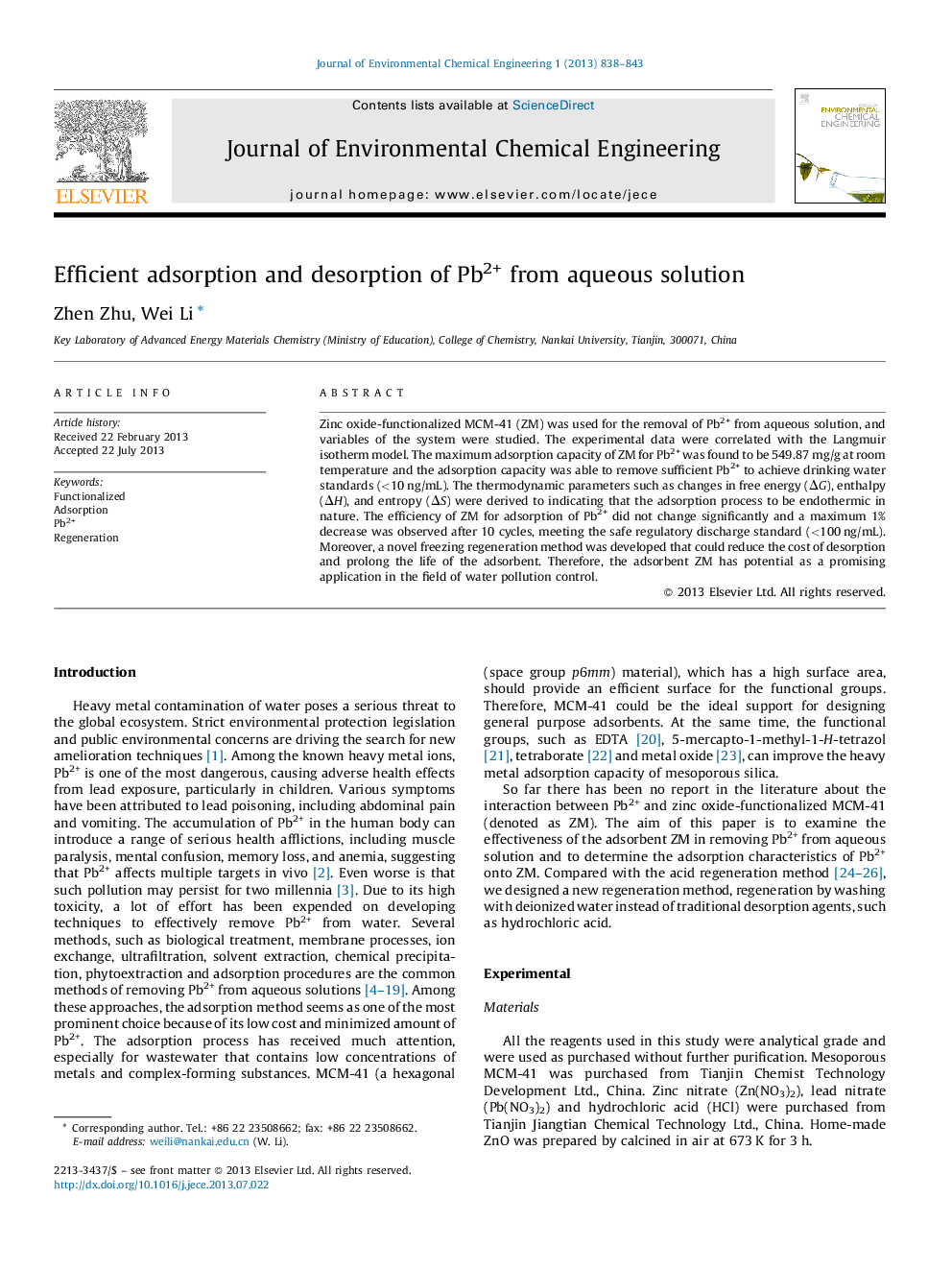| Article ID | Journal | Published Year | Pages | File Type |
|---|---|---|---|---|
| 222473 | Journal of Environmental Chemical Engineering | 2013 | 6 Pages |
Zinc oxide-functionalized MCM-41 (ZM) was used for the removal of Pb2+ from aqueous solution, and variables of the system were studied. The experimental data were correlated with the Langmuir isotherm model. The maximum adsorption capacity of ZM for Pb2+ was found to be 549.87 mg/g at room temperature and the adsorption capacity was able to remove sufficient Pb2+ to achieve drinking water standards (<10 ng/mL). The thermodynamic parameters such as changes in free energy (ΔG), enthalpy (ΔH), and entropy (ΔS) were derived to indicating that the adsorption process to be endothermic in nature. The efficiency of ZM for adsorption of Pb2+ did not change significantly and a maximum 1% decrease was observed after 10 cycles, meeting the safe regulatory discharge standard (<100 ng/mL). Moreover, a novel freezing regeneration method was developed that could reduce the cost of desorption and prolong the life of the adsorbent. Therefore, the adsorbent ZM has potential as a promising application in the field of water pollution control.
